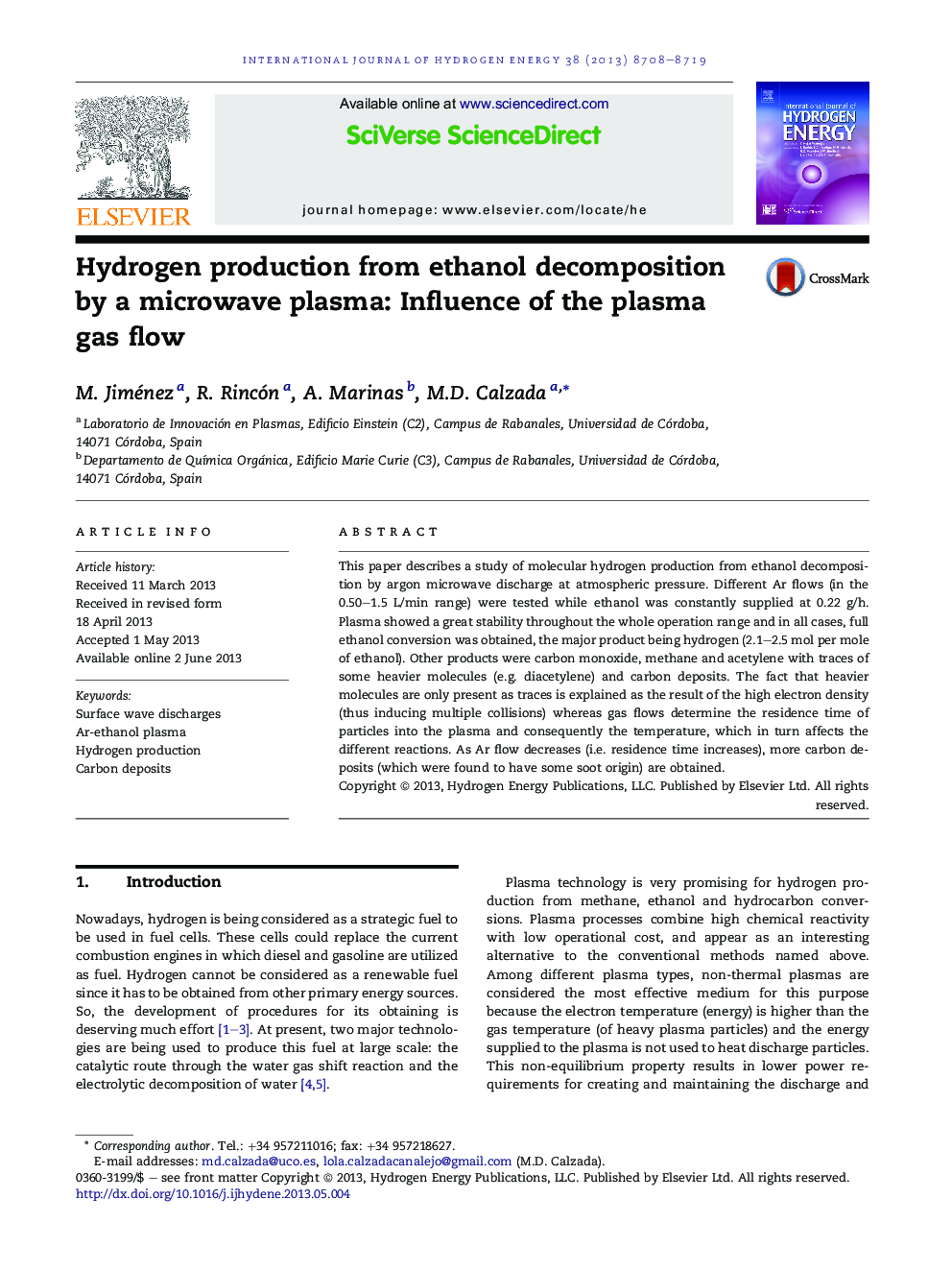| Article ID | Journal | Published Year | Pages | File Type |
|---|---|---|---|---|
| 7722501 | International Journal of Hydrogen Energy | 2013 | 12 Pages |
Abstract
This paper describes a study of molecular hydrogen production from ethanol decomposition by argon microwave discharge at atmospheric pressure. Different Ar flows (in the 0.50-1.5Â L/min range) were tested while ethanol was constantly supplied at 0.22Â g/h. Plasma showed a great stability throughout the whole operation range and in all cases, full ethanol conversion was obtained, the major product being hydrogen (2.1-2.5Â mol per mole of ethanol). Other products were carbon monoxide, methane and acetylene with traces of some heavier molecules (e.g. diacetylene) and carbon deposits. The fact that heavier molecules are only present as traces is explained as the result of the high electron density (thus inducing multiple collisions) whereas gas flows determine the residence time of particles into the plasma and consequently the temperature, which in turn affects the different reactions. As Ar flow decreases (i.e. residence time increases), more carbon deposits (which were found to have some soot origin) are obtained.
Keywords
Related Topics
Physical Sciences and Engineering
Chemistry
Electrochemistry
Authors
M. Jiménez, R. Rincón, A. Marinas, M.D. Calzada,
